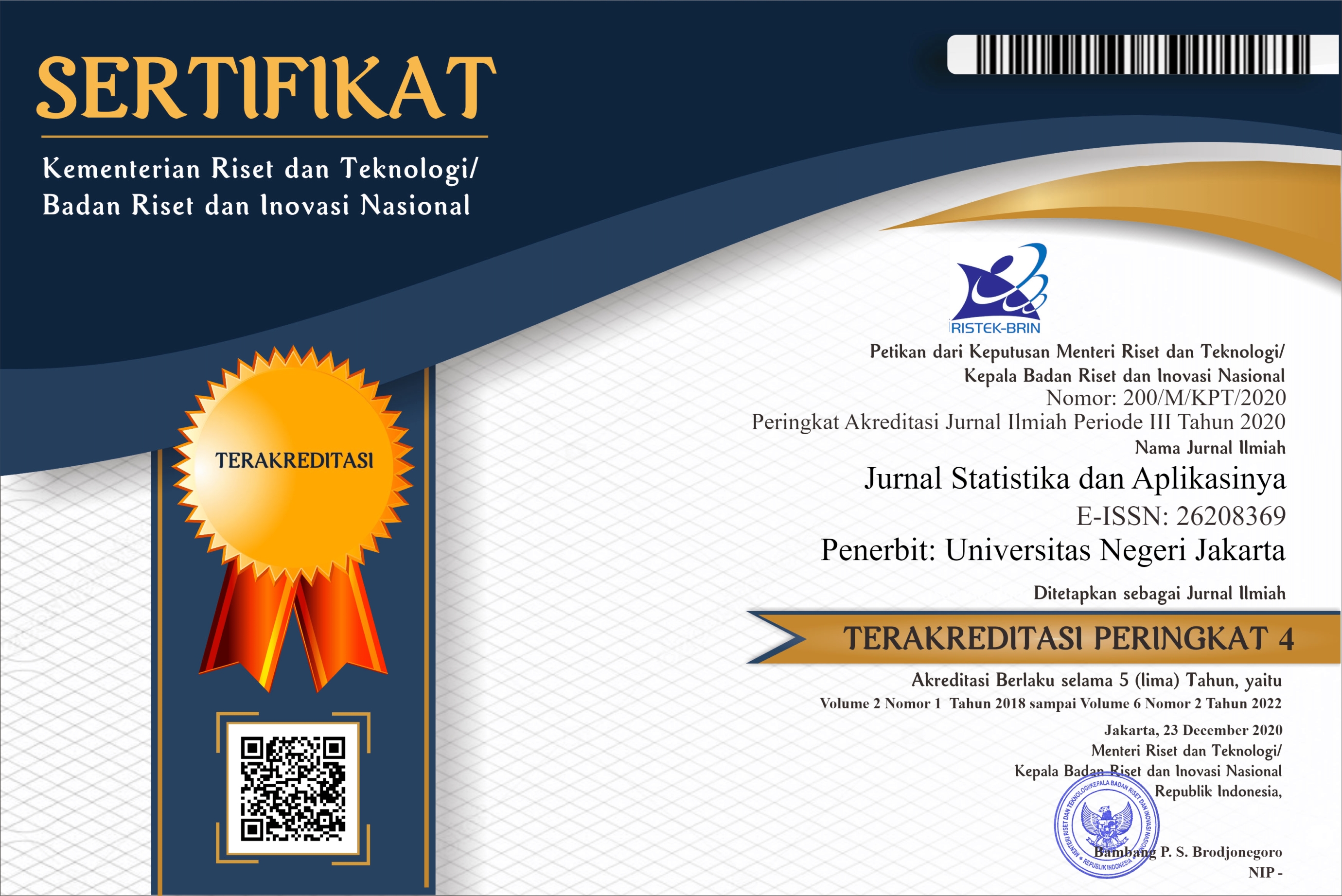Pemodelan Besar Klaim menggunakan Distribusi Berekor dan Tail-Value-at-Risk (TVaR) pada Data Sampel Badan Penyelenggara Jaminan Sosial (BPJS) Kesehatan
DOI:
https://doi.org/10.21009/JSA.07203Keywords:
amount of claim, inpatient, lognormal distribution, outpatient, TVaRAbstract
Information about amount of insurance claims is needed by insurer to set premium or other decisions in the future. Amount of claims modeling is a way to determine the characteristics of a distribution of claims data and can be used to predict the amount of claims that may occur. A commonly used model for amount of insurance claims data is the distribution model for heavy tails. The discussion in this article focuses on modeling amount of insurance claims using Lognormal, Pareto and Weibull distributions, and also using Gamma distribution for comparison. The data used is sample data from Badan Penyelenggara Jaminan Sosial (BPJS) Kesehatan in 2015-2016. The data contains membership data and details of the amount of each participant's claim. The analysis is carried out to find out the best candidate model that matches the amount of insurance claims data for both inpatient and outpatient categories. In addition, the Tail-Value-at-Risk (TVaR) of the model will be calculated to determine the amount of capital that will be required with a 75% confidence level. Based on the results of the study, the best model for large data samples of claims for outpatient and inpatient categories is the Lognormal model. TVaR for the outpatient category is Rp492,596 and for the inpatient category is Rp7,672,726.






